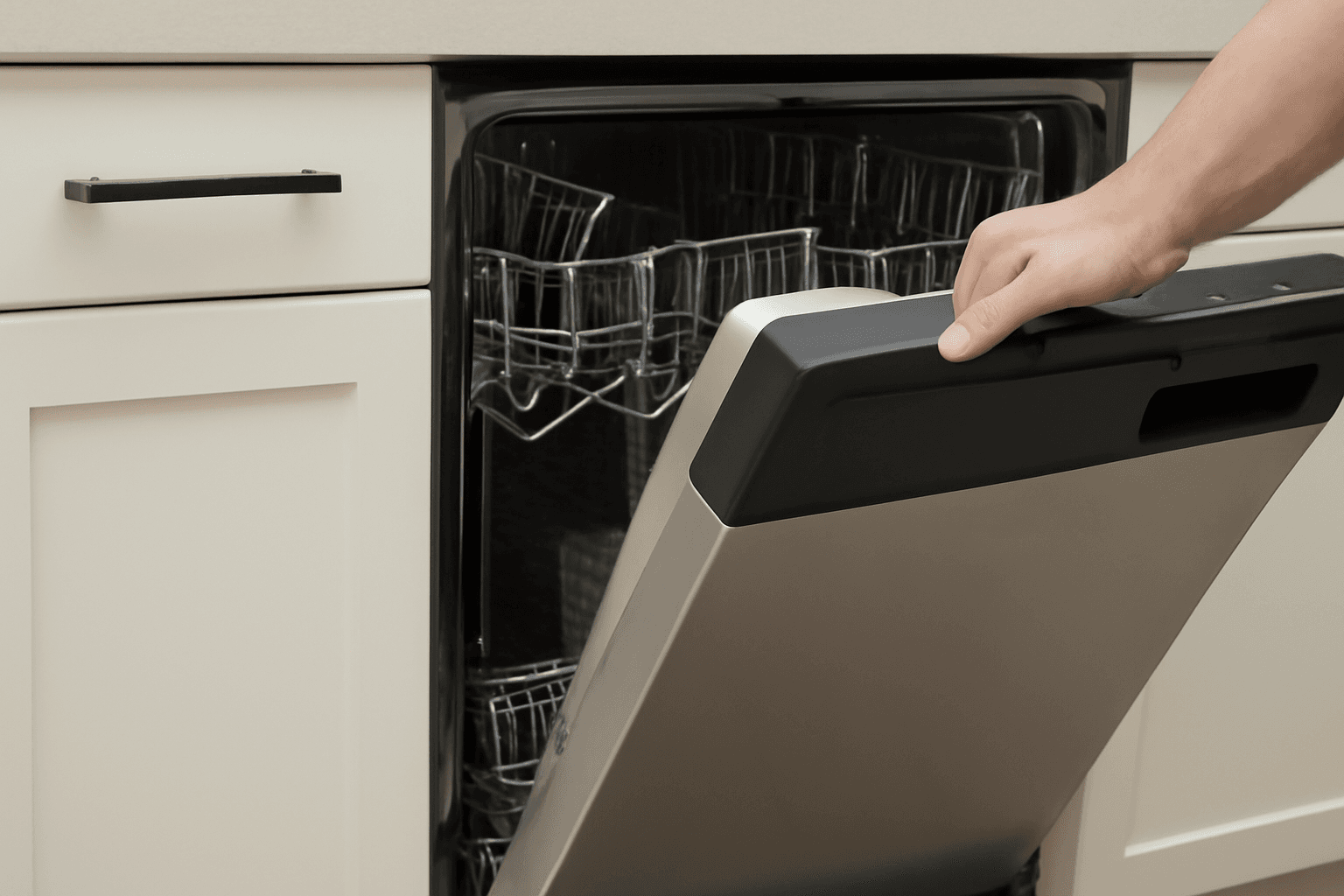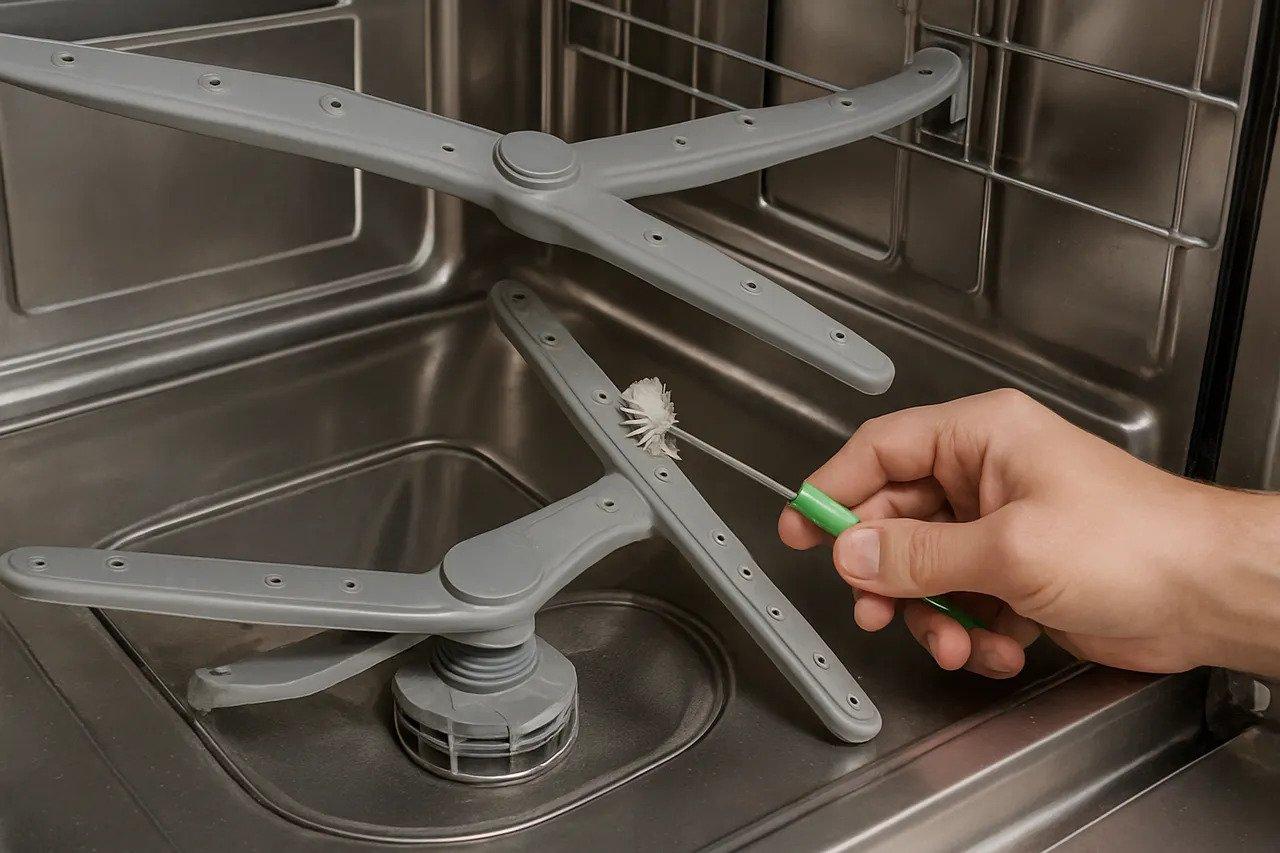Review
Dishwasher Parts Explained: A Quick and Easy Guide
AZparts Team
Updated on October 19, 2025
7 min read
Have you ever wondered what’s inside a dishwasher and how its dishwasher inside parts work together to get your dishes spotless? Understanding the internal components of your dishwasher not only helps with troubleshooting but also prepares you for installing or replacing dishwasher parts confidently at home. In this comprehensive guide, AZParts breaks down each major dishwasher inside part, explaining how it functions and what to check when maintenance or replacement is needed.

1. Inside Parts of a Dishwasher: What You Need to Know?
A dishwasher contains several crucial components working together to deliver clean, sanitized dishes. From the water inlet valve to the heating element, each part plays a specific role in the cleaning process. Let's break down these essential dishwasher components and understand how they contribute to your appliance's performance.
1.1. Heating Element
The heating element, a coiled metal component located at the bottom of the dishwasher tub, raises the water temperature to break down grease and sanitize dishes effectively. During the drying cycle, it warms the air inside to speed up moisture evaporation. If dishes come out cold or wet, it may indicate a failing element.
You can find compatible dishwasher heating element replacements at AZParts to restore your appliance’s cleaning and drying performance.
1.2. Detergent and Rinse Aid Dispenser
The detergent dispenser releases cleaning agents at programmed times during washing. It has a spring-loaded door that opens when signaled by the control board. Modern dishwashers feature multi-compartment systems for pre-wash detergent, main wash detergent, and rinse aid. The rinse aid compartment releases solution during final rinsing to help water sheet off dishes, reducing spots and improving drying. Dispenser malfunctions can lead to detergent residue and poor cleaning results.
1.3. Control Panel and Buttons
The control panel is located on the dishwasher's front face or top edge (hidden in integrated models for a seamless look). As the primary user interface, this sophisticated electronic system serves as the command center for the appliance. It manages critical functions including water temperature, spray arm operation, and cycle timing to optimize cleaning performance for all dishware types.
1.4. Dish Racks and Adjustable Shelves
The Dishwasher racks systems feature upper and lower compartments strategically positioned to maximize capacity while ensuring proper water circulation. Premium models may add a third slim rack at the top for utensils. These racks secure dishes in optimal positions with adjustable tines, fold-down shelves, height-adjustable upper racks, and specialized zones for stemware - all designed to accommodate various dishware shapes while providing maximum cleaning efficiency.
1.5. Silverware Basket
The silverware basket in the dishwasher's lower rack provides dedicated space for utensil cleaning. This removable component offers convenient access while maximizing interior space, with premium models featuring door-mounted or upper rack alternatives. Its specialized compartments with removable dividers organize utensils effectively, while strategic openings ensure thorough cleaning. The portable design with handles simplifies transfer from dishwasher to drawer.

The silverware basket in the dishwasher's provides dedicated space for utensil cleaning (Source: Freepik)
1.6. Spray Arms
Spray arms are rotating mechanisms at multiple levels in dishwashers that distribute water throughout the cavity. They rotate using pressure from the circulation pump and feature strategically placed holes creating effective spray patterns. These components direct water toward dishes from multiple angles. Premium models may include additional arms for targeted cleaning. The combination of spinning motion and pressurized water removes food particles and grease from dishware.
1.7. Door Latch and Door Assembly
The door latch is located where the dishwasher door meets the main unit frame, securing it closed during cycles and connecting to safety switches. The complete door assembly forms the front-facing portion of the appliance and interfaces with the dishwasher tub. It includes critical sealing components that prevent water leakage during operation. The assembly provides structural integrity, insulation, and water containment while maintaining a watertight seal. It allows convenient access for loading and unloading dishes through multiple components working together.
1.8. Water Inlet Valve
The water inlet valve is located at the bottom rear of the dishwasher and connects your home’s plumbing to the appliance. This valve is one of the most important parts inside a dishwasher, controlling the precise amount of water that flows into the tub during each wash cycle. If your dishwasher isn’t filling properly or shows an error code, the valve could be clogged or defective.
1.9. Circulation Pump and Motor
The circulation pump and motor sit at the bottom center of the dishwasher, beneath the tub assembly. This essential dishwasher inside part creates the water pressure that drives spray arms, ensuring deep and thorough cleaning. When these components begin to wear out, you might notice poor cleaning results, strange noises, or standing water after a cycle.
1.10. Filtration System
The filtration system is located at the bottom of the dishwasher tub beneath the lower spray arm, capturing food particles during wash cycles. It serves as a critical junction where water collects before recirculation through spray arms. The system continuously maintains water cleanliness by filtering waste before recirculation. Modern dishwashers feature multi-stage filtration with coarse filters for larger particles and fine mesh for smaller debris. This prevents particles from redepositing on clean dishes.

The filtration system captures food particles, preventing them from redepositing on dishes (Source: Freepik)
2. FAQ About Dishwasher Parts
Before diving into common questions, it’s helpful to know what you need to install a dishwasher or replace specific components. Whether you’re working on the inside parts of a dishwasher or handling a new setup, understanding how each piece fits together ensures safer and more effective maintenance.
2.1. Can I Replace Dishwasher Parts Myself?
Many dishwasher parts can be replaced without professional help if you have basic DIY skills and the right tools, especially simpler components like filters, spray arms, and dish racks. However, before attempting any DIY dishwasher repair, always remember to disconnect power, shut off the water supply, and consult your manual before attempting repairs; more complex issues involving electrical components, motors, or sealed systems may require professional skills. AZParts provides detailed specifications and installation guides that make many self-installations straightforward and cost-effective.
2.2. How Do I Know If a Part Needs Replacing?
Identifying dishwasher part failures requires careful observation of specific symptoms: heating element issues manifest as wet dishes after drying or cold water during wash cycles; water inlet valve problems cause filling difficulties; pump and motor failures create unusual noises or leave standing water; control panel malfunctions show as unresponsive buttons or error codes; and door latch problems prevent proper operation or cause leaks.
2.3. Can I Reuse Old Dishwasher Parts?
While some dishwasher components (such as racks, baskets, and decorative elements) may be suitable for reuse, critical parts affecting performance and safety generally shouldn't be recycled due to concerns about invisible wear, material degradation from water and detergent exposure, and potential microscopic damage. For reliable dishwasher performance, critical dishwasher parts like pumps, valves, and electronic controls should be purchased from reputable suppliers like AZParts that offer quality guarantees and proper specifications.
2.4. When Is It Better to Replace Than Repair?
When deciding between repairing or replacing your dishwasher, consider both financial and practical factors. Replacement is advisable when repairs exceed 50% of a new unit's cost, your appliance is over 8-10 years old, multiple components are failing, parts are scarce, or newer models offer significant energy efficiency improvements.
Conversely, repairing a relatively new dishwasher with a simple issue is typically more economical and environmentally responsible. Consulting a professional and maintaining regular care routines can help extend your appliance's lifespan and optimize performance.
Whether you’re replacing a worn dishwasher circulation pump, installing a new water inlet valve, or learning what you need to install a dishwasher, AZParts has every part to keep your appliance running smoothly. Explore genuine dishwasher inside parts for all major brands, ensuring quality performance and long-term reliability for your kitchen.
Need help finding the right dishwasher part? Visit AZParts or contact our knowledgeable customer service team for personalized assistance. We're committed to helping you keep your appliances running at peak performance with high-quality replacement parts and expert guidance.
Contact Information:
8 The Green, Ste A, Dover, Delaware 19901-3618, United States
support@azparts.com
8 The Green, Ste A, Dover, Delaware 19901-3618, United States
support@azparts.com
Dishwasher
Further Reading
Further Reading




_1748246700.jpg&w=3840&q=75)
